Significance
Located on Linkou Plateau, Zhulinshan Guanyin Temple is an important religious center for residents of New Taipei City and Taoyuan City. Worship at the temple was banned during the Kominka (Japanization) movement of the Japanese colonial period, but followers took the risk of passing the temple statues from household to household to continue to enshrine and secretly continue their traditions of worship, which have thus been preserved and passed down to the present day. The temple was constructed in the magnificent, lavishly decorated southern Chinese architectural style. The spacious courtyard can hold a thousand worshippers, and the grand hall appears even more imposing when viewed from this vantage point. The Buddhist temple showcases the essence of Taiwan’s local architectural arts. The Chinese couplets on the engraved stone pillars were written in vigorous calligraphy strokes, and the wooden sculptures and carved stones—whether of birds, animals, insects, fish, or portraits, objects, and flowers—have all been delineated in a delicate and elegant style.
History
Zhulinshan Guanyin Temple in Linkou houses the Eighteen-armed Guanyin, one of the manifestations of the Guanyin Bodhisattva (the Buddhist Goddess of Mercy). In 1801, the divine spirit of the Guanyin of Jinjiang (Anhai) Longshan Temple, Fujian Province, was imparted into three statues which were brought to Taiwan, where they were worshipped by followers. During the Japanese rule, the imposition of the Kominka movement, or Japanization, prohibited Taiwanese folk religions and an attempt was made to burn the statues. The crisis was only averted by followers pursuing their religious worship in secret. Afterwards, the Japanese government agreed to construct a Japanese style temple and allow adherents to openly practice there, and so a new temple was built at its current location. Construction was completed in 1939, and Zhulinshan Temple was subsequently named for Luzhu, Linkou, and Guishan, where most believers resided. Over multiple renovations, the temple invited experts to travel to and study architecture in mainland China and Japan. The temple’s current exterior employs glazed tiles, Taiwan cypress, bluestones from mainland China, and camphor wood sculptures. The latest reconstruction of the building was completed in 2012.
Special Features

1The Eighteen-Armed Guanyin Zhulinshan Guanyin Temple in Linkou houses the Eighteen-Armed Guanyin; the Eighteen Arhats accompany it on either side. The east and west halls enshrine Emperor Guan, Mazu (the Heavenly Holy Mother), and other deities. The Eighteen-Armed Guanyin symbolizes the eighteen kinds of emptiness according to prajñā (wisdom), where all kinds of wayward knowledge are eradicated, and all beings are reminded of how Buddhist enlightenment is attained through wisdom. The circular, or wheel-shaped, position of the pair of arms which join hands in the statue’s lap is a symbol of completeness embodying blessings, virtue, and perfect wisdom.
Zhulinshan Guanyin Temple in Linkou houses the Eighteen-Armed Guanyin; the Eighteen Arhats accompany it on either side. The east and west halls enshrine Emperor Guan, Mazu (the Heavenly Holy Mother), and other deities. The Eighteen-Armed Guanyin symbolizes the eighteen kinds of emptiness according to prajñā (wisdom), where all kinds of wayward knowledge are eradicated, and all beings are reminded of how Buddhist enlightenment is attained through wisdom. The circular, or wheel-shaped, position of the pair of arms which join hands in the statue’s lap is a symbol of completeness embodying blessings, virtue, and perfect wisdom.
2The Architectural Style of Zhulinshan Guanyin Temple, Linkou
 The renovated Zhulinshan Guanyin Temple in Linkou employs the traditional Minnan, or southern Chinese, architectural style, consisting of three halls from front to back separated by courtyards, with seven temple doors across its façade. The rooftop was built in the hip-and-gable style with an additional gable on the top. The additional roof layer crowning the temple roof signifies respect and greatness. Taiwan cypress was used for the construction of the building. It is extremely unusual to find a piece of cypress as large as the fifteen-meter ridgepole that spans the main hall. Both the ridgepole and the crossbeams in the main hall were made using thousand-year-old Taiwan cypress. In total, the temple used thirty-eight thousand-year-old Taiwan cypress trunks, outnumbering any other temple in Taiwan. The 600 wooden sculptures at the roof ridges were also fashioned from Taiwan cypress. Together, they create a magnificent visual effect that has become a local landmark.
The renovated Zhulinshan Guanyin Temple in Linkou employs the traditional Minnan, or southern Chinese, architectural style, consisting of three halls from front to back separated by courtyards, with seven temple doors across its façade. The rooftop was built in the hip-and-gable style with an additional gable on the top. The additional roof layer crowning the temple roof signifies respect and greatness. Taiwan cypress was used for the construction of the building. It is extremely unusual to find a piece of cypress as large as the fifteen-meter ridgepole that spans the main hall. Both the ridgepole and the crossbeams in the main hall were made using thousand-year-old Taiwan cypress. In total, the temple used thirty-eight thousand-year-old Taiwan cypress trunks, outnumbering any other temple in Taiwan. The 600 wooden sculptures at the roof ridges were also fashioned from Taiwan cypress. Together, they create a magnificent visual effect that has become a local landmark.
3The Longest Cypress Altar in TaiwanThe cypress altar in the main hall, measuring approximately 12.73 meters, is currently the longest one in Taiwan. It is said to be the result of the collective effort of ten to twenty artisans who worked for 10,000 days to complete it.
4Cherry Blossom Viewing in Zhulinshan Temple Park
 Zhulinshan Guanyin Temple is accompanied by the beautiful Zhulinshansi Park, which features spacious gardens profuse with flowers in beds enclosed by carved stone balustrades. A fountain adds a fresh sense of vitality to the park’s pond. Since cherry trees are planted both inside and around the park, the site has become a must-see location for visitors in February of every year, when the early spring cherry blossoms are in full bloom. The park also contains two bridges that span the pond in a graceful arc, directly across from the front gate.
Zhulinshan Guanyin Temple is accompanied by the beautiful Zhulinshansi Park, which features spacious gardens profuse with flowers in beds enclosed by carved stone balustrades. A fountain adds a fresh sense of vitality to the park’s pond. Since cherry trees are planted both inside and around the park, the site has become a must-see location for visitors in February of every year, when the early spring cherry blossoms are in full bloom. The park also contains two bridges that span the pond in a graceful arc, directly across from the front gate.
Reminders
Cherry trees and azaleas are planted throughout Linkou’s Zhulinshan Guanyin Temple grounds. Every spring, when the cherry blossoms and azaleas are in full bloom, the temple is transformed into a popular location for flower viewing.
Panoramic
Directions